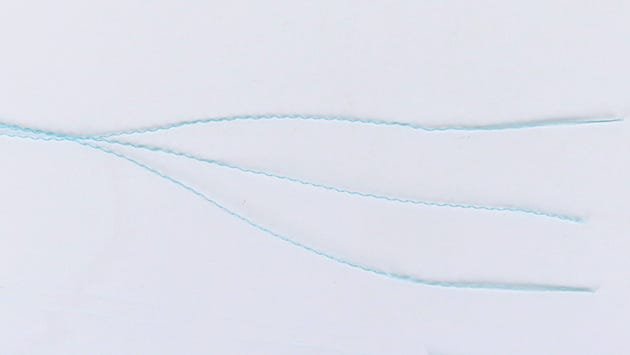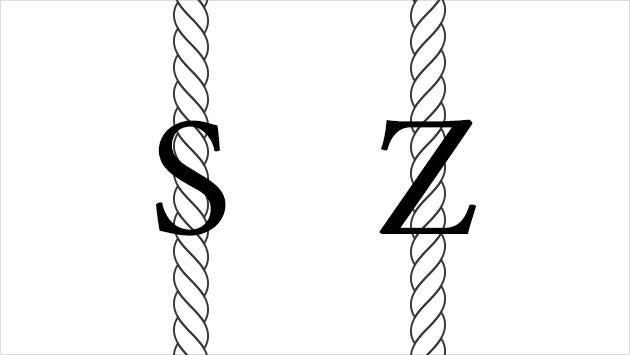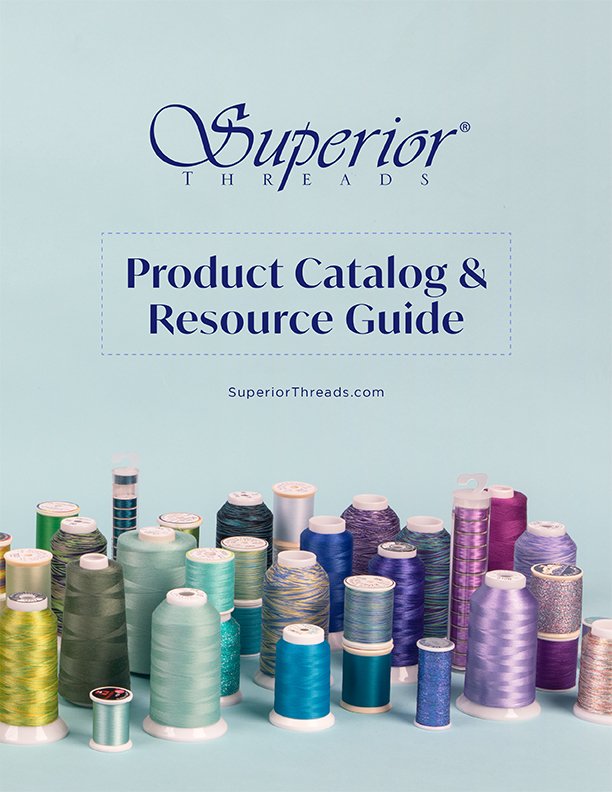Superior Education
THREAD TWIST
- THREAD QUALITY
- TWIST PER METER
- TENSILE STRENGTH
What is thread twist?
With the exception of monofilament thread, all threads produced for stitching have some degree of twist applied. Most threads are either two or three strands (the technical term for a strand of thread is ply) twisted together to make the final, sewable product. If a particular thread is labeled #50/2 or #50/3, the number following the slash indicates the number of plies or strands twisted together to make the final sewable thread. Each individual strand or ply also has multiple micro-strands twisted together. One important component of thread quality is the number of twists applied within a given length, such as twists per meter, to the thread. A loosely twisted thread will look bulky and fluffy on the cone or spool. It will unravel and shred more easily than a tightly twisted thread.
Imagine the thread moving along the thread path of a sewing machine or longarm machine, through the tension discs, and through the needle. If the thread has a loose twist to it, it will easily be caught, pinched, or snagged. Slight snags will result in lint buildup as tiny pieces are torn away from the thread as it passes along the thread path at hundreds of stitches per minute. A strong snag or pinch will result in thread breakage. A tightly twisted thread has a smoother surface and will not get caught or snagged as easily.

Diagram of thread plies and twist

S twist and Z twist visualized
Although it is never printed on labels, thread twist is measured by the number of twists applied per meter (approx. 3 feet). A loosely twisted thread requires less total fiber content, takes less time to produce, and is less expensive. A low-quality, low-cost thread may have as few as 150 twists per meter. Think of the $.99 cone of serger thread that can easily be untwisted by rubbing it between your fingers. It's inexpensive because it hasn't undergone fine processing and has a very low twist-per-meter ratio. In contrast, a high-quality thread will have as many as 1,200 twists per meter. This results in a smooth finish and consistent surface. A higher twist also condenses more thread content into the finite thread diameter resulting in greater tensile (breaking) strength. This is one of the reasons why a high quality thread breaks less than a low quality thread.
Here's an exaggerated example of how proper twisting affects the quality of thread: Take a large bath towel, lay it on the floor, and measure the length. Let's say it is 48 inches long. Roll the towel lengthwise so you now have a rolled towel that is still 48 inches long. Start twisting the towel. Every 3-4 twists, re-measure the length and you will notice that you lose about two inches. Continue to twist the towel another 10 turns and the towel will be only about 36 inches long. We've lost 25% of the length of the towel. The result, however, is a very smoothly rolled towel. The tightly twisted towel is also much stronger than a loosely twisted towel. The more rotations (twist) applied, the smoother the surface becomes.
If we start with 10,000 yds. of untwisted thread and apply a loose twist, we will end up with 9,500 yds. of thread that is linty, has a propensity for breaking, and lacking a uniform, smooth appearance. If we apply a much higher twist-per-meter ratio to create a high quality thread, the final length of the the twisted thread will be about 7,500 yds. A quality thread requires about 20% more fiber content than a low quality thread. Like most things, you get what you pay for.
What is S Twist and Z Twist?
Recently, there has been a lot of talk about S twist and Z twist threads and it's getting attention. Some refer to thread twist as a left or right twist, but the proper terminology is S or Z twist. When a sewing thread is constructed, it is made up of multiple strands, usually two or three strands (also referred to as plies or ply) twisted together, although some may have as many as six or eight strands twisted together. All sewing, embroidery, or quilting threads made for home machines, industrial machines, or longarm machines should have a final Z twist pattern.
The initial twist (or first twist) for the individual strands should be an S twist. These strands are then twisted together in a final Z twist to form the thread. This is the same worldwide for any major brand of sewing, embroidery, or quilting machine. There are a few threads that have the opposite twist. Some hand quilting thread, knitting, and weaving threads have a final S twist. If you use a thread with an opposite twist, the thread will loosen instead of tighten as you sew with it. Threads are not marked with the twist pattern because it isn't considered essential to know. If you use quality thread from a reliable company and stitch with it in its intended purpose, most likely it has the proper twist. If you notice that your thread unravels as it sews, it is probably a thread not intended for machine work.
Watch our video on Thread Twist.

 View Our Product Catalog
View Our Product Catalog